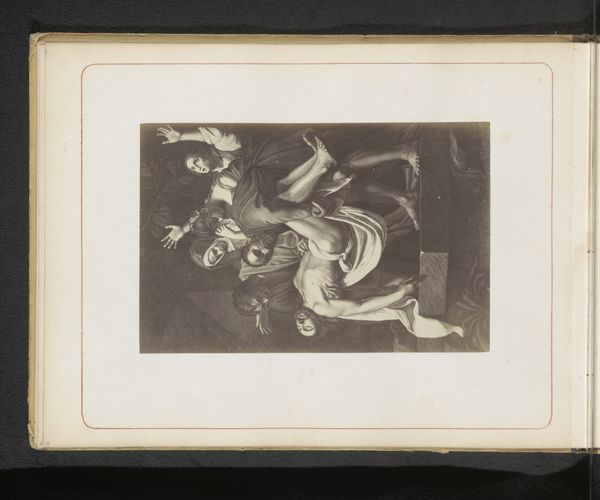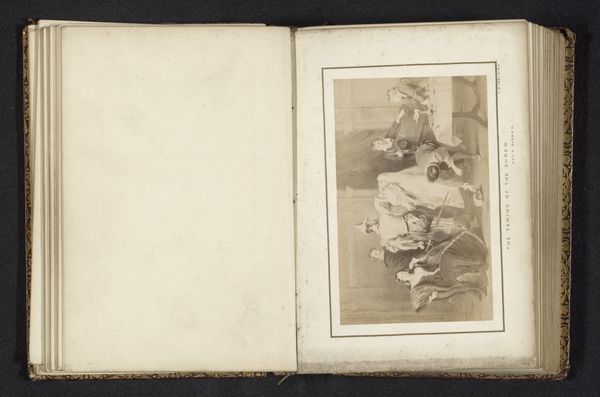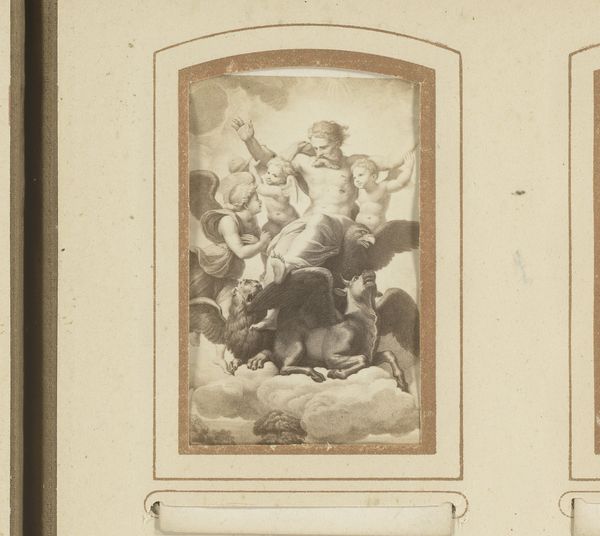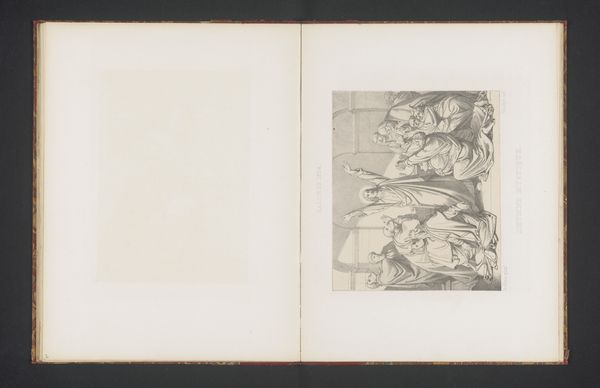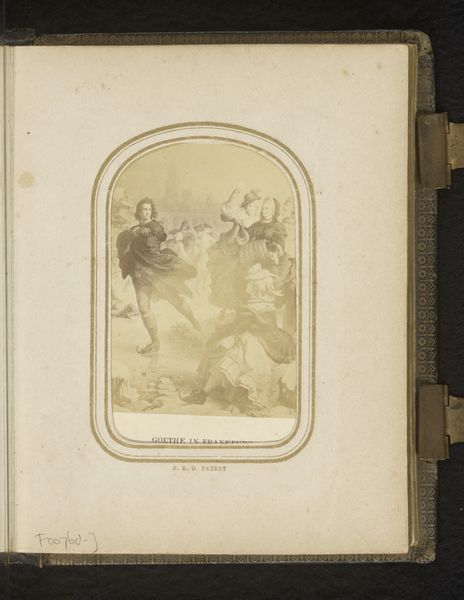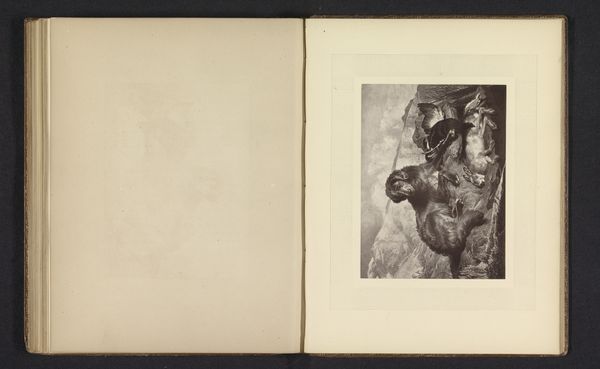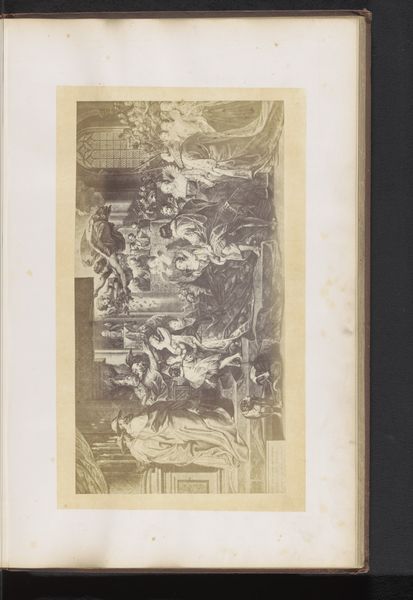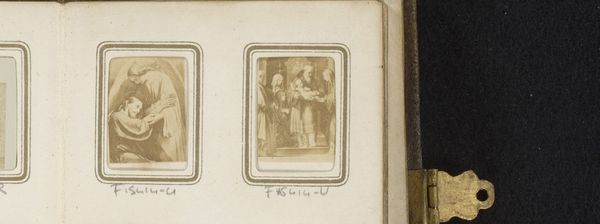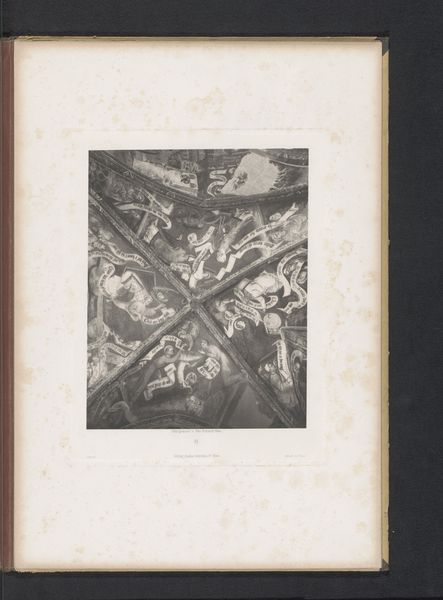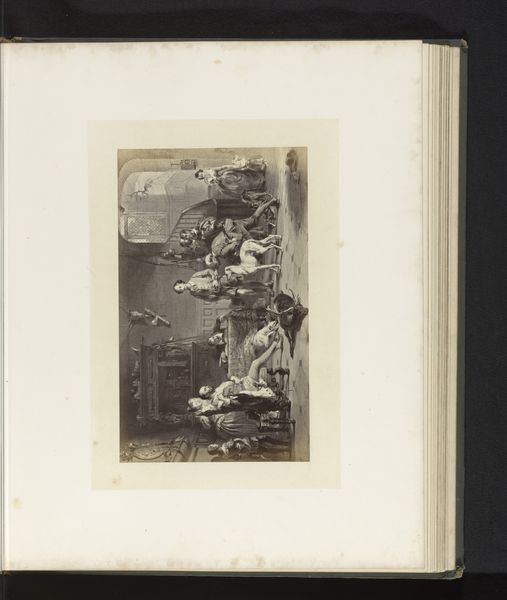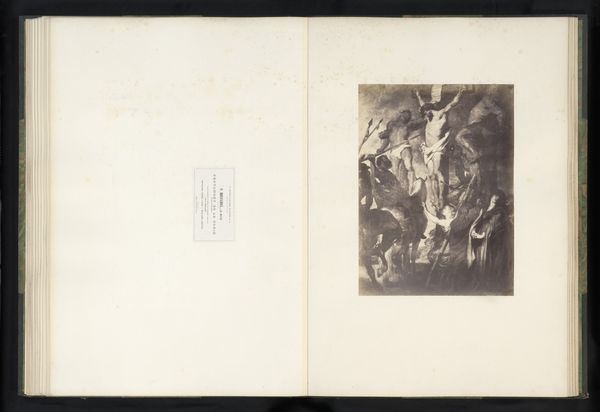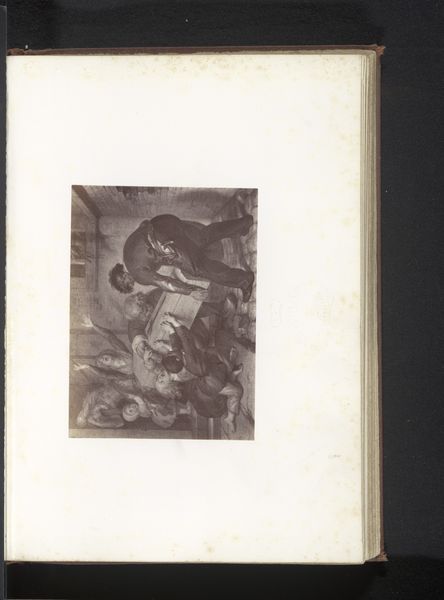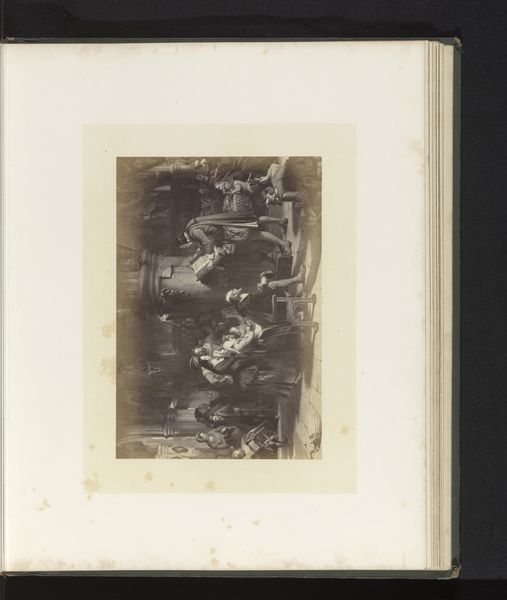
Dimensions: height 83 mm, width 51 mm
Copyright: Rijks Museum: Open Domain
Editor: This is a photographic reproduction of "The Descent from the Cross" by Peter Paul Rubens, dating roughly between 1860 and 1900. I am immediately struck by how the photographic medium flattens the dynamic drama of the original painting, presenting it as almost a staged tableau. What draws your eye when you look at this piece? Curator: I’m interested in the means of its production and circulation. This isn't the *Descent* itself, but a photographic print, mass-produced in the 19th century. Consider the labor involved – not just Rubens' original brushstrokes, but the photographer’s darkroom work, the paper manufacture, and the distribution networks. This photograph made the painting accessible to a far wider audience than could ever see the original. Editor: So, the materiality of the print itself is as important as the image it represents? Curator: Precisely. The choice of photography speaks to a rising middle class who wanted access to high art, and photographic reproductions provided that at a much lower cost, democratizing art consumption but also altering its inherent value. The print becomes a commodity, subject to market forces in a way Rubens' painting never was initially. Note how this "print" flattens dynamic movements of bodies of Baroque into a reproducible image. Editor: It’s fascinating to think about the layers of production—Rubens, the photographer, the printers. Each adding a layer of context. It shifts my understanding of the piece completely. Curator: Absolutely. This is where thinking about the means of production reveals social meaning. The act of mechanically reproducing art changes its status and its impact. A painted 'Descent' is venerated as the original artwork whereas its 'fotoreproductie' invites consumerism in the late 19th century. Editor: Thank you. Considering this photographic copy as a manufactured object has truly opened up new avenues for my thinking! Curator: Indeed! Understanding the materials and modes of distribution of art adds depth to understanding both art, consumption, and society.
Comments
No comments
Be the first to comment and join the conversation on the ultimate creative platform.
